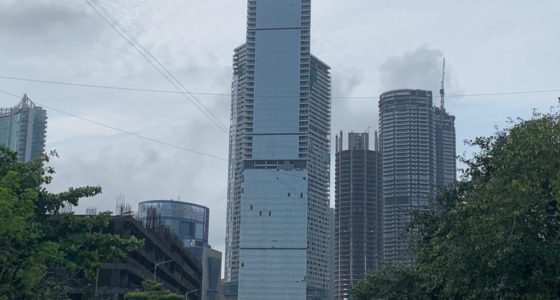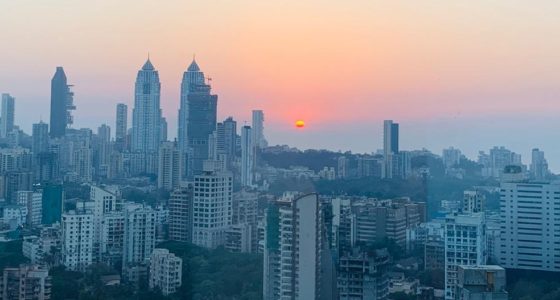The affordability of buying a house in India may be gradually becoming a little less as we move into an environment of tightening interest rates, and inflationary pressures built in by global economic conditions. A combination of rising interest rates and prices has dampened affordability in 2022 and it is likely to further erode in 2023 amid rising acquisition costs. Even though affordability is likely to be impacted, the momentum inhibitor looks to be a temporary one with India’s focus on economic growth and likely easing of inflationary pressures expected to reverse the current interest rate growth. While affordability is decidedly weakening, we are still some way off the worst affordability periods for all cities and unlikely to see a repeat of those levels. This with better future sentiment is expected to keep the residential markets in an upbeat mood for the next year as well, says the report on Home Purchase Affordability Index (HPAI) 2022. Affordability across the seven key residential markets in India started to improve from 2014 onwards until affordability hit its peak by end of 2021.
Mumbai has been the fastest-moving city in terms of its HPAI score improvement and became an affordable market with its threshold hitting 100. It is likely to slip below the threshold value of an affordable market but only slightly given all the macroeconomic headwinds and remain much above its HPAI low of 43 in 2013.
Affordability was at its lowest for all cities in 2013, with Mumbai being the most unaffordable with the average household income being enough to just qualify for a home loan to purchase less than half the size of a 1,000 sq. ft apartment. JLL Research’s analysis reveals that between 2013 and 2021, affordability increased consistently across all cities and hit peak values, marking the best time for home purchases.
“What remains pertinent is that we are coming off an 18-month period of a robust recovery in residential demand even as prices and interest rates have moved up during the latter part of this timeframe. And affordability despite the estimates of a decline will still remain quite attractive and second best only to 2021. Also worth recognizing is the fact that homebuyers take into account prevailing economic scenario, employment market prospects, income & job stability and future expectations of income, savings and inflation. We are now entering the territory of a rising interest rate cycle, driven by global macroeconomic headwinds. While affordability is likely to be impacted, the momentum-inhibitor looks to be a temporary one with India’s focus on economic growth and likely easing of inflationary pressures expected to reverse the current interest rate growth. The residential market stakeholders and policymakers need to remain in sync and agile to ensure that the sector continues to remain in the pink of health,” said Siva Krishnan, Managing Director, and Head of Residential Services India.
Kolkata, Hyderabad, and Pune remain the most affordable cities in India.
Kolkata, with a value of 192 (a value of more than 100 implies that an average household has more than enough income to qualify for the home loan) is still on track to remain the most affordable residential market in the country among the top seven cities, while Pune (183) and Hyderabad (174) will follow, however, all three will show progressively lower affordability levels compared to 2021 for both 2022 estimates and 2023 forecasted values. Chennai (161) and Bengaluru (167) also have relatively good affordability levels.
In 2022, affordability gains have been slightly mitigated as inflationary pressures have caused developers to pass on the rise in input costs to the buyers, demand has supported price increases and the RBI’s repo rate hikes have resulted in higher home loan costs.
The current year has built on the gains with healthy growth in economic output resulting in household incomes likely to rise by an average of 7%. Residential prices have also risen driven by robust demand and pass-through of rising input costs onto homebuyers with the price growth averaging 4-10% across the major cities. Both these and the repo rate -the three critical elements of affordability are now on a trajectory that is likely to worsen affordability levels. Macroeconomic headwinds and inflationary pressures are likely to slow down household income growth, with residential prices under pressure as input cost increases are yet to be transmitted fully.
Dr. Samantak Das, Chief Economist, and Head of Research and REIS, India, JLL said, “Theaffordability score is a steppingstone for developers and other stakeholders toward strategic decision-making around project activity, pricing decisions, and other relevant parameters that could impact the affordability quotient of a prospective homebuyer. In 2021, the resumption of economic activities by the second half spurred a recovery in household incomes while improving buyer activity also supported minor price increases. In fact, affordability was at its best across all cities in 2021, marking it as the most opportune time for home purchases. Affordability levels are likely to trend down through the end of 2022 and thereafter in 2023 as well. Mortgage rates are likely to move up further to near 8-year highs. Price pressures and slower income growth are further likely to create a temporary glitch for affordability.”
“However, this will be a temporary phase and the momentum is likely to sustain also on the expectations of moderating inflation supporting a reversal in repo rate hikes even as longer loan tenures and pricing deals will be likely measures from stakeholders to keep buyers’ affordability levels within comfort,” he added.
Also Read: Second best November in 10 years for Mumbai home sales









